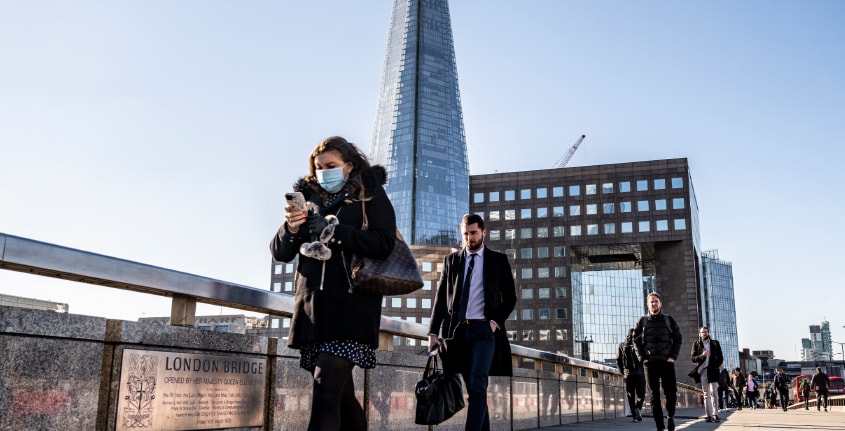How Visa Modeled Responsive Leadership Amid Coronavirus
On March 25, as most of the world was locking down, staying home and shuttering businesses in the hope of saving lives and managing hospital system capacity amid a pandemic, Visa’s CEO sent a video to all of the company’s 20,000 worldwide employees.
In it, CEO Al Kelly pledged that Visa would have no layoffs in 2020, in spite of a cascading global economy. A day later, when Mr. Kelly publicly confirmed that pledge, he explained his reasoning, saying: “There is enough sadness in the world and already too many families impacted by job losses. I have no interest in contributing to that. Our employees and clients continue to be my top priority during this challenging time.”
To be sure, Visa’s business was not as dramatically affected by the pandemic as other businesses were—airlines, hospitality companies, and oil and gas companies are among the most significantly affected industries. Committing strongly to employees in such a time of uncertainty was more than just an act of corporate largesse. It was representative of Visa’s underlying philosophy. Because the company espouses “responsive leadership,” it counts on many members in its global ranks to be part of the response to significant and rapidly evolving global business challenges.
Responsive leaders embody three key traits: They are highly attuned and prepared to rapidly adapt to market conditions. They actively seek ways to change their organizations. And, as Mr. Kelly’s pledge demonstrated, they are sympathetic to the needs of employees and insistent that employees have a say in making organizational change happen.
That is especially true in a time of business disruption, whether that disruption results from a historic pandemic, a major weather event, or more-common disturbances such as market consolidation, regulatory tussles or a data breach.
In such times of disruption, responsive leaders insist that individuals beyond the C-suite be part of the big decisions that keep companies moving forward. “In our workplace,” says Jennifer Grant, executive vice president at Visa Inc., “everyone is seen as a leader, regardless of job title or experience.” Share on X
Still, effectively and efficiently developing broad-based responsive leadership teams (or “tiger teams”) that can be deployed in challenging times is, itself, a challenge. Many top leaders struggle with letting junior executives and others outside of the C-suite into “the room where it happens” at such key moments. But Visa and other responsive companies serve as an example that the struggle is worth it because efficiently sourcing responsive leadership traits throughout an organization can help them survive even the most challenging of times.
“It’s this kind of accountability that helps foster a culture of growth and development.”—Jennifer Grant, Executive Vice President, Visa Inc.
“Calm, Empathy, and Resolve”
Mr. Kelly’s March 25 no-layoff pledge was dramatic but not out of character. Mr. Kelly had been filming a global video message for employees every week starting in the early days of COVID-19’s spread. In the message, he shared personal anecdotes about his life, addressed employee questions and offered up – dates on the business.
The idea was to set a tone. And that tone, Ms. Grant says, was one of “calm, empathy and resolve, encouraging everyone to take care of themselves and their families first and foremost, while also continuing to move forward with what they can control.”
The CEO videos were just one part of Visa’s responsive leadership action on the pandemic. The company also set up a communications program that stretched across all sectors of the business. Through more videos, emails and conference sessions, leaders around the world provided continual updates and asked employee feedback on a variety of issues. “This kind of leadership is inherent to our culture,” Ms. Grant says. “Our executive team believes in transparent communications.”
Indeed, the company actively trains employees on how to be responsive leaders. That means talking to employees about inclusiveness. They’re challenged to have a “mindset that welcomes a variety of perspectives, levels of experience and cultural backgrounds, coupled with a strong bias to action,” Ms. Grant says. “For us, it’s not only about what we do, it’s about how we go about doing it—challenging our employees to consider the way they behave and treat others.”
There is accountability tied to that philosophy. Visa’s annual employee performance reviews include evaluations of how employees are demonstrating the company’s preferred leadership principles in their daily work lives. Employees are graded on several leadership criteria, including leading by example, communicating openly, collaborating well with others, enabling and inspiring others, acting decisively and excelling with Visa’s partners.
“It’s this kind of accountability that helps foster a culture of growth and development,” Ms. Grant says. “We encourage responsive and inclusive leaders who take the time to understand both the people and the operating context of the company.”
Put another way: Visa is constantly on the lookout for new leaders to develop within the company. And, the people it finds often find themselves assigned to tiger teams.
For Visa, finding the people who can step up in down moments is a nonstop process of evaluation and leadership development that might work for other organizations. But other than finding people who understand inclusiveness, what exactly should companies be looking for when developing responsive leaders, especially those who can serve on their critical response teams?
Erik Korsvik Østergaard, author of The Responsive Leader, says responsive leaders should meet two seemingly dichotomous criteria. “You want to find people who are very business-diligent, who have a broad understanding of the organization and who have deep technical skills,” he says. “On the other hand, you also have to find people who have emotional intelligence. You could think of this more simply as people who are willing to try new things at work but who are also very humane.”
Putting Response Teams to Work
Visa moved quickly to respond to the COVID-19 crisis, even making $210 million in grants available to micro-businesses and small businesses through its Visa Foundation. But the company may have been uniquely prepared for the pandemic’s economic fallout.
Before COVID-19 spread across the world, Visa had enacted a Global Pandemic Plan. After outbreaks of SARS and swine flu had hit in different regions globally, Visa developed its pandemic plan based on guidance provided by the World Health Organization.
The plan addressed the prevention and minimization of staff exposure to infectious disease and called for the activation of a crisis management team that would help establish steps to address the pandemic.
The crisis management team is actually many teams, all operating under Visa’s Global Business Continuity program. The program encompasses multiple coordinated plans that can be put into action to keep the company running in the event of a crisis in the marketplace or another disruption of the global economy. Each plan, focusing on a specific element of the business, was developed to allow key operations to be able to continue regardless of the disruption Visa faces. The plans are comprehensive: Each includes a process for assessing a given crisis’s impact on a given area of the business, a process to assess ongoing risk, and a process to evaluate and establish new business priorities. Though business continuity is the ultimate goal, the safety of employees and clients is fundamental to each plan.
Execution of those plans is ultimately the responsibility of those in Visa’s C-suite. But the company puts much of the responsibility for the execution in the hands of executives outside of headquarters. For instance, teams in Europe helped push policymakers in the European Union to raise a cap on the total allowed value for contactless transactions—the kind that require no credit cards to be handed off from a purchaser to a buyer.

Spreading out the response to big, market-changing events can be productive both because it helps companies develop more leaders more quickly and because it gives C-suite leaders more perspective on what needs to be done in acutely challenging situations, say some experts. “Allowing smart people to be smart, allowing them to get together and then allowing them to execute is really the key in a crisis,” says Richard Long, a senior advisory consultant with business continuity and crisis management firm MHA Consulting and a former IT director at PetSmart.
Still, that’s not always easy for top executives who are used to issuing all the commands. “Top leaders often think they are or should be the smartest person in the room and are used to being directive versus facilitating,” Mr. Long says. “But a crisis is different from a senior leadership meeting. You can’t just make a list of instructions, directions or demands that get you out of a crisis. You need people working together. And that’s why it’s so important that you get people in the room who are problem solvers, understand the impacts to actions and are creative thinkers, not just the top leaders. They need to approve decisions and actions, but do not have to develop the actions or solutions.”
“This article appeared in the Summer 2020 issue of IQ Insigniam Quarterly, with the headline “A Charge to Follow.” To begin receiving IQ, go here.”



